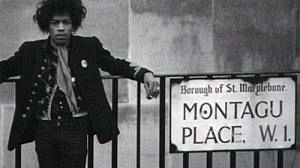So now that my grad school thesis is turned in I decided to reward myself in the dorkiest way possible: by going to visit museums. The cockney man I love was not able to come with me so it was kind of interesting getting involved in London's history spots without someone I can ask a bevy of questions to.
Questions like: "Is marmite an actual food or is used just for torture?" or "Do people in England really think that Ben Franklin was a serial killer?" But here we go:
Stop 1) The Handel Museum
Did you know that Jimmy Hendrix and Handel lived in the same row home in west London? Because I didn't. And honestly, that is kind of the only architectural interest of this house. Not to be dismissive to the museum, or it's staff, who were lovely. But unless you're super into Hanoverians, Harpsichords or dope-ass wigs. It's a row-home that has a very nice open spaces and a flat in the attic. I'd skip it. Though the restaurant in the little courtyard out back is nice.
Stop 2) The Dickens Museum
The Dickens Museum on the other hand is much more interesting and maybe because as a person, Dickens is just more interesting. Handel was incredibly private but Dickens may have been the human equivalent of a Chihuahua high on cocaine: the dude had some energy. The house itself is what a respectable Victorian home should be, and for that, it's interesting. It's lush, but compact, pretentious but not insincere. As someone who only recently started to get into cooking I can state that the kitchens were fascinating, particularly the sinks which seemed to have been a huge piece of stone carved into the shape of a utility sink.
Yet what I liked best about this museum was that it felt like the home that a writer would live in. It was comfortable but bright. Secluded but not isolated. It was the home of someone who works from home.
Off-topic: he was not cool to his wife. but then again she was loopy on drugs. also kind of dumb. Seriously look it up. Somebody hit a mid-life crisis wall hard.
SPEAKING OF WIVES!!!!
Stop 3) Hampton Court Palace
This was a place I had been dying to get to all year but like going the post-office, I hadn't found time. Well not anymore. Instead I took the noon train from Waterloo to Kingston-Upon-Thames. If one had been part of Henry VIII's court one would have taken a boat there (or back depending on if you were going to get your head cut off). But I'm rabble at best, so it's public transport for this kid.
The story of Hampton court is actually a tale of two buildings. The first one being the Renaissance Palace of a certain Cardinal Wolsey who had both sense and power, but not quiet enough as it would turn out. The other being Christopher Wren's palace for William and Mary on the other side. Both are really interesting in their aesthetics mostly because they're doing the same thing: promoting pleasure.
Henry the VIII's pleasure was grand, open air dining, dancing and spectacle. Sexy ladies and their scandalous French hoods. mrrrowww.
William of Orange's pleasure was a quiet evening and a good book, maybe a meal with a few good friends. He was a homebody.
And the layouts reflect this. The original Hampton Court is open and solid the addition is quiet and delicate.
However, more than anything else it feels like a palace. The only comparison I can think of at this scale is, rather uncreatively, Versailles. But Versailles is a consistent design plan. ALL of it feels ostentatious and dictated by strict protocol, and it all boils down to the king as an other-worldly creation. This is not to say that Hampton Court lacks that sense of force of personality, but that the personalities there are not as exacting in what they want their design to be. If Versailles is an exacting and coordinated dance, then Hampton Court is a waltz. It's got rules, but they're pretty easy to follow.
Maybe this has something to do with the inconsistencies of power for both of the main residents. Henry had only come to the throne because his father had beaten Richard III, William only had it because he married a nice girl who didn't have any brothers. (Not to mention both he and his wife had the ghost of Charles I haunting their every move). Versailles is absolutely sure that their power is unending, Hampton Court wants to prove that they are powerful in the here and now.
Though I think my favorite part of the whole palace was the influence of Henry's Wives or as I call them:
- Catherine "Everyone Forgets I'm a Blonde" of Aragon
- Anne "My milkshake brings all the boys to the yard" Boleyn
- Jane "Something in Sheep's Clothing" Seymour
- Anne "It's what's on the inside that counts" of Cleeves
- Katherine "Pics or it didn't happen" Howard
- Catherine "Just get me out of here" Parr
Ahhh Henry, you may have been a horrible monster but you were never boring.






